You need to sign in or sign up before continuing.
Scan barcode
Overview
Per the Times:
As voted on by 503 novelists, nonfiction writers, poets, critics and other book lovers — with a little help from the staff of The New York Times Book Review.
All book descriptions pulled from the Times list: https://www.nytimes.com/interactive/2024/books/best-books-21st-century.html
Reader's picks challenge here: https://app.thestorygraph.com/reading_challenges/085ad427-b733-455f-b7a1-8a52e8794ee2
New York Times 100 Best Books of the 21st Century
70 participants (100 books)
Overview
Per the Times:
As voted on by 503 novelists, nonfiction writers, poets, critics and other book lovers — with a little help from the staff of The New York Times Book Review.
All book descriptions pulled from the Times list: https://www.nytimes.com/interactive/2024/books/best-books-21st-century.html
Reader's picks challenge here: https://app.thestorygraph.com/reading_challenges/085ad427-b733-455f-b7a1-8a52e8794ee2
Challenge Books
13

The Road
Cormac McCarthy
There is nothing green or growing in McCarthy’s masterpiece of dystopian fiction, the story of an unnamed man and his young son migrating over a newly post-apocalyptic earth where the only remaining life forms are desperate humans who have mostly descended into marauding cannibalism. Yet McCarthy renders his deathscape in curious, riveting detail punctuated by flashes of a lost world from the man’s memory that become colorful myths for his son. In the end, “The Road” is a paean to parental love: A father nurtures and protects his child with ingenuity and tenderness, a triumph that feels redemptive even in a world without hope. — Jennifer Egan, author of “A Visit From the Goon Squad”
Liked it? Try “On Such a Full Sea,” by Chang-rae Lee or “The Buried Giant,” by Kazuo Ishiguro.
Liked it? Try “On Such a Full Sea,” by Chang-rae Lee or “The Buried Giant,” by Kazuo Ishiguro.
14
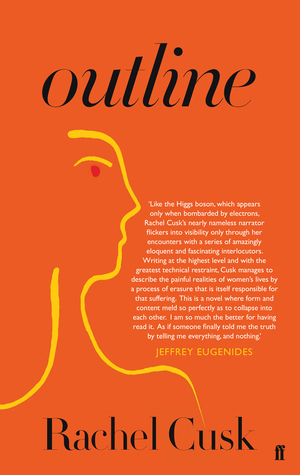
Outline
Rachel Cusk
This novel is the first and best in Cusk’s philosophical, unsettling and semi-autobiographical Outline trilogy, which also includes the novels “Transit” and “Kudos.” In this one an English writer flies to Athens to teach at a workshop. Along the way, and once there, she falls into intense and resonant conversations about art, intimacy, life and love. Cusk deals, brilliantly, in uncomfortable truths. — Dwight Garner
Liked it? Try “Checkout 19,” by Claire-Louise Bennett or “Topics of Conversation,” by Miranda Popkey.
Liked it? Try “Checkout 19,” by Claire-Louise Bennett or “Topics of Conversation,” by Miranda Popkey.
15
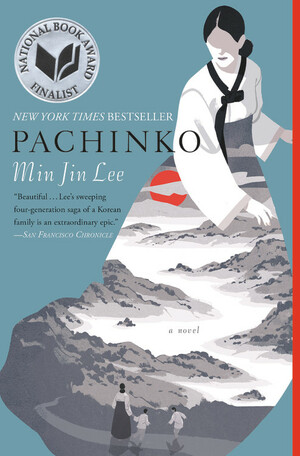
Pachinko
Min Jin Lee
“History has failed us, but no matter.” So begins Lee’s novel, the rich and roiling chronicle of a Korean family passing through four generations of war, colonization and personal strife. There are slick mobsters and disabled fishermen, forbidden loves and secret losses. And of course, pachinko, the pinball-ish game whose popularity often supplies a financial lifeline for the book’s characters — gamblers at life like all of us, if hardly guaranteed a win.
Liked it? Try “Homegoing,” by Yaa Gyasi, “The Covenant of Water,” by Abraham Verghese or “Kantika,” by Elizabeth Graver.
Liked it? Try “Homegoing,” by Yaa Gyasi, “The Covenant of Water,” by Abraham Verghese or “Kantika,” by Elizabeth Graver.
16

The Amazing Adventures of Kavalier & Clay
Michael Chabon
Set during the first heyday of the American comic book industry, from the late 1930s to the early 1950s, Chabon’s exuberant epic centers on the Brooklyn-raised Sammy Clay and his Czech immigrant cousin, Joe Kavalier, who together pour their hopes and fears into a successful comic series even as life delivers them some nearly unbearable tragedies. Besotted with language and brimming with pop culture, political relevance and bravura storytelling, the novel won the Pulitzer Prize for fiction in 2001.
Liked it? Try “Carter Beats the Devil,” by Glen David Gold or “The Fortress of Solitude,” by Jonathan Lethem.
Liked it? Try “Carter Beats the Devil,” by Glen David Gold or “The Fortress of Solitude,” by Jonathan Lethem.
17
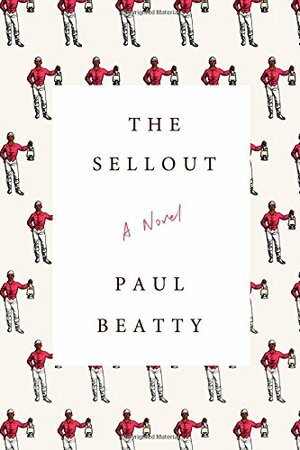
The Sellout
Paul Beatty
Part of this wild satire on matters racial, post-racial, maybe-racial and Definitely Not Racial in American life concerns a group known as the Dum Dum Donut Intellectuals. One of them has produced an expurgated edition of an American classic titled “The Pejorative-Free Adventures and Intellectual and Spiritual Journeys of African-American Jim and His Young Protégé, White Brother Huckleberry Finn, as They Go in Search of the Lost Black Family Unit.” Beatty’s method is the exact opposite: In his hands, everything sacred is profaned, from the Supreme Court to the Little Rascals. “The Sellout” is explosively funny and not a little bit dangerous: an incendiary device disguised as a whoopee cushion, or maybe vice versa. — A.O. Scott
Liked it? Try “Harry Sylvester Bird,” by Chinelo Okparanta or “We Cast a Shadow,” by Maurice Carlos Ruffin.
Liked it? Try “Harry Sylvester Bird,” by Chinelo Okparanta or “We Cast a Shadow,” by Maurice Carlos Ruffin.
18
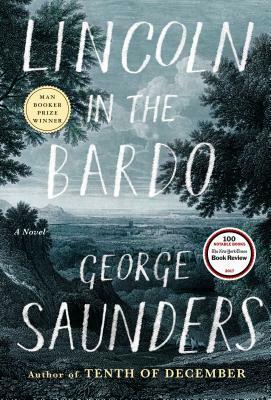
Lincoln in the Bardo
George Saunders
A father mourns his young son, dead of typhoid; a president mourns his country riven by civil war. In Saunders’s indelible portrait, set in a graveyard populated by garrulous spirits, these images collide and coalesce, transforming Lincoln’s private grief — his 11-year-old boy, Willie, died in the White House in 1862 — into a nation’s, a polyphony of voices and stories. The only novel to date by a writer revered for his satirical short stories, this book marks less a change of course than a foregrounding of what has distinguished his work all along — a generosity of spirit, an ear acutely tuned to human suffering.
Liked it? Try “Sing, Unburied, Sing,” by Jesmyn Ward, “Grief Is the Thing With Feathers,” by Max Porter or “Hamnet,” by Maggie O’Farrell.
Liked it? Try “Sing, Unburied, Sing,” by Jesmyn Ward, “Grief Is the Thing With Feathers,” by Max Porter or “Hamnet,” by Maggie O’Farrell.
19
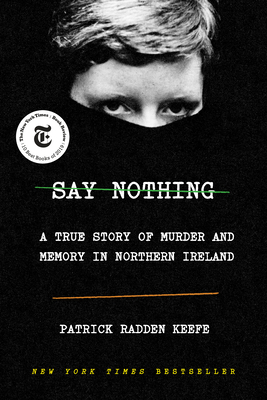
Say Nothing: A True Story of Murder and Memory in Northern Ireland
Patrick Radden Keefe
“Say Nothing” is an amazing accomplishment — a definitive, impeccably researched history of the Troubles, a grim, gripping thriller, an illuminating portrait of extraordinary people who did unspeakable things, driven by what they saw as the justness of their cause. Those of us who lived in the U.K. in the last three decades of the 20th century know the names and the events — we were all affected, in some way or another, by the bombs, the bomb threats, the assassinations and attempted assassinations. What we didn’t know was what it felt like to be on the inside of a particularly bleak period of history. This book is, I think, unquestionably one of the greatest literary achievements of the 21st century. — Nick Hornby, author of “High Fidelity”
Liked it? Try “A Fever in the Heartland: The Ku Klux Klan's Plot to Take Over America, and the Woman Who Stopped Them,” by Timothy Egan or “We Own This City: A True Story of Crime, Cops, and Corruption,” by Justin Fenton.
Liked it? Try “A Fever in the Heartland: The Ku Klux Klan's Plot to Take Over America, and the Woman Who Stopped Them,” by Timothy Egan or “We Own This City: A True Story of Crime, Cops, and Corruption,” by Justin Fenton.
20

Erasure
Percival Everett
More than 20 years before it was made into an Oscar-winning movie, Everett’s deft literary satire imagined a world in which a cerebral novelist and professor named Thelonious “Monk” Ellison finds mainstream success only when he deigns to produce the most broad and ghettoized portrayal of Black pain. If only the ensuing decades had made the whole concept feel laughably obsolete; alas, all the 2023 screen adaptation merited was a title change: “American Fiction.”
Liked it? Try “Yellowface,” by R.F. Kuang or “The Sellout,” by Paul Beatty.
Liked it? Try “Yellowface,” by R.F. Kuang or “The Sellout,” by Paul Beatty.
21
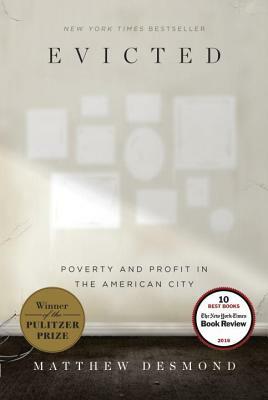
Evicted: Poverty and Profit in the American City
Matthew Desmond
Like Barbara Ehrenreich or Michelle Alexander, Desmond has a knack for crystallizing the ills of a patently unequal America — here it’s the housing crisis, as told through eight Milwaukee families — in clear, imperative terms. If reading his nightmarish exposé of a system in which race and poverty are shamelessly weaponized and eviction costs less than accountability feels like outrage fuel, it’s prescriptive, too; to look away would be its own kind of crime.
Liked it? Try “Nickel and Dimed: On (Not) Getting by in America,” by Barbara Ehrenreich or “Maid: Hard Work, Low Pay, and a Mother's Will to Survive,” by Stephanie Land.
Liked it? Try “Nickel and Dimed: On (Not) Getting by in America,” by Barbara Ehrenreich or “Maid: Hard Work, Low Pay, and a Mother's Will to Survive,” by Stephanie Land.
22
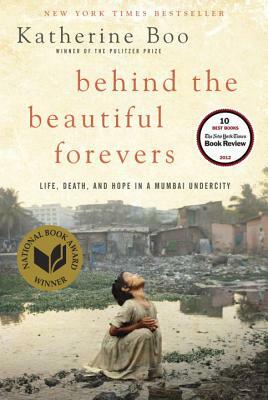
Behind the Beautiful Forevers: Life, Death, and Hope in a Mumbai Undercity
Katherine Boo
If the smash movie “Slumdog Millionaire” gave the world a feel-good story of transcending caste in India via pluck and sheer improbable luck, Boo’s nonfiction exploration of several interconnected lives on the squalid outskirts of Mumbai is its sobering, necessary corrective. The casual violence and perfidy she finds there is staggering; the poverty and disease, beyond bleak. In place of triumph-of-the-human-spirit bromides, though, what the book delivers is its own kind of cinema, harsh and true.
Liked it? Try “Nothing to Envy: Ordinary Lives in North Korea,” by Barbara Demick or “Waiting to Be Arrested at Night: A Uyghur Poet's Memoir of China's Genocide,” by Tahir Hamut Izgil; translated by Joshua L. Freeman.
Liked it? Try “Nothing to Envy: Ordinary Lives in North Korea,” by Barbara Demick or “Waiting to Be Arrested at Night: A Uyghur Poet's Memoir of China's Genocide,” by Tahir Hamut Izgil; translated by Joshua L. Freeman.
23
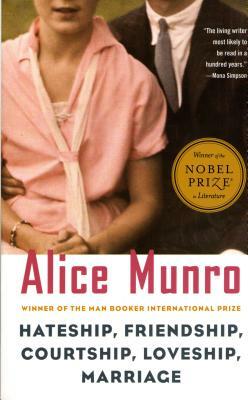
Hateship, Friendship, Courtship, Loveship, Marriage: Stories
Alice Munro
Munro’s stories apply pointillistic detail and scrupulous psychological insight to render their characters’ lives in full, at lengths that test the boundaries of the term “short fiction.” (Only one story in this book is below 30 pages, and the longest is over 50.) The collection touches on many of Munro’s lifelong themes — family secrets, sudden reversals of fortune, sexual tensions and the unreliability of memory — culminating in a standout story about a man confronting his senile wife’s attachment to a fellow resident at her nursing home.
Liked it? Try “So Late in the Day: Stories of Women and Men,” by Claire Keegan or “Nora Webster,” by Colm Tóibín.
Liked it? Try “So Late in the Day: Stories of Women and Men,” by Claire Keegan or “Nora Webster,” by Colm Tóibín.
24

The Overstory
Richard Powers
We may never see a poem as lovely as a tree, but a novel about trees — they are both the stealth protagonists and the beating, fine-grained heart of this strange, marvelous book — becomes its own kind of poetry, biology lesson and impassioned environmental polemic in Powers’s hands. To know that our botanical friends are capable of communication and sacrifice, sex and memory, is mind-altering. It is also, you might say, credit overdue: Without wood pulp, after all, what would the books we love be made of?
Liked it? Try “Greenwood,” by Michael Christie or “Entangled Life: How Fungi Make Our Worlds, Change Our Minds & Shape Our Futures,” by Merlin Sheldrake.
Liked it? Try “Greenwood,” by Michael Christie or “Entangled Life: How Fungi Make Our Worlds, Change Our Minds & Shape Our Futures,” by Merlin Sheldrake.
